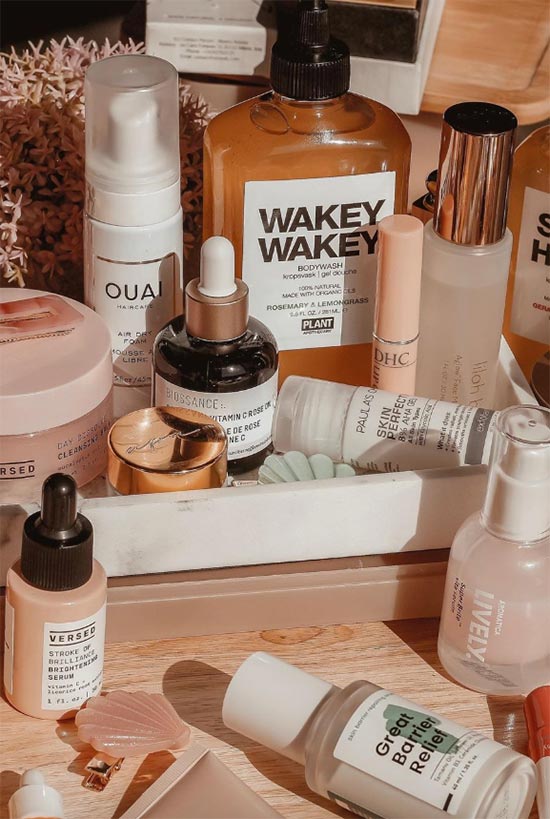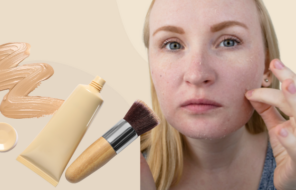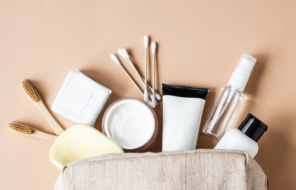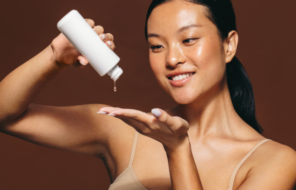Rosacea is a fairly annoying skin condition that causes skin redness along with a few other symptoms. It is a sensitizing skin condition that comes and goes. Those who have it understand that it’s not just about rosy cheeks! A rosacea flare-up can be painful, which is why finding a good rosacea treatment can be so helpful for improving quality of life.
I wrote this article to educate because I believe knowledge is power, but it is not a replacement for medical treatment. If you think your skin redness might be rosacea, then make sure to speak to a medical professional before pursuing rosacea treatment on your own.
In this article, we go into detail about what rosacea is and what are its symptoms, and we also go over the interesting enigma of rosacea causes. I’ll try and help you learn the difference between rosacea and acne since they two are often confused for one another. Then the good part – how do you get rid of rosacea anyway?
I explain what the common rosacea treatments are and also mention the known triggers. To finish things off, I’ve put together the best sample rosacea skincare routine to help keep your skin soothed, along with some calming tips and tricks.
In this article:
- What Is Rosacea?
- What Are the Symptoms of Rosacea?
- What Are the Common Rosacea Causes?
- How to Tell the Difference Between Rosacea and Acne?
- How to Get Rid of Rosacea?
- Safe Rosacea Skincare Routine
- Rosacea Skincare Tips
What Is Rosacea?
Rosacea is a chronic skin condition that causes facial redness, inflammation and swelling. When I talk about people with sensitive skin I also lump rosacea sufferers into that category, since this condition makes the skin extremely sensitive. According to the American Academy of Dermatology, there are four subtypes of rosacea that are usually referred to by numbers:
- Subtype 1 is also known as erythematotelangiectatic rosacea, and it manifests mostly as diffused facial redness or flushing, especially on the cheeks close to the nose.
- Subtype 2 is called papulopustular rosacea or sometimes acne rosacea because it leads to pustules that look a lot like pimples caused by acne.
- Subtype 3 is called phymatous rosacea, which leads to increased skin thickness, usually on the nose. It causes the skin to thicken up and look swollen and bumpy. It may also affect the chin, forehead, or ears. It is more common among men than women.
- Subtype 4 is ocular rosacea, which affects the eyes, making them look red and irritated and causing irritation to the eyelids.
What Are the Symptoms of Rosacea?
In this article, I will focus on the first two types of rosacea, since they are the ones where topical skin care can make the biggest difference. These are their most common symptoms:
- Diffused skin redness can be a part of all types of rosacea. During a flare-up blood rushes to the skin in a process called ‘vasodilation’. It usually only occurs during flare-ups, but if it happens too frequently the redness can become a permanent skin issue.
- A feeling of stinging or irritation that has been compared to sunburn.
- Visible red veins are most common in subtypes 1 and 2. They look like little threads of red just under the skin. They are often referred to as ‘broken capillaries’, which is a misnomer.
- Occasional bumps or papules that can be easily mistaken for acne are the main symptoms of rosacea subtype 2. They usually occur closer to the center of the face, but there are exceptions.
- Rosacea is marked by flare-ups of symptoms or changes in severity. While the condition is for life, the flare-ups can occur due to sun exposure, weather, food triggers (especially alcohol and spicy food), stress levels, and other health factors.
It’s important to note that these symptoms can also be a sign of other conditions. An allergic reaction can often look like rosacea, as can atopic dermatitis, seborrheic dermatitis, and psoriasis, all of which have different causes and require different kinds of care and medical attention.
Lupus is another disease that can lead to rosacea-like redness. Only a doctor is qualified to diagnose any of these conditions including rosacea, so I urge that you speak to a professional when you see these kinds of symptoms pop up.

What Are the Common Rosacea Causes?
There is a bit of a mystery surrounding rosacea causes. There are a few theories as to what the cause may be, and there is also the possibility that rosacea is caused by a few of those factors lining up with each other. The National Rosacea Society lists the following potential causes.
- Genetic predisposition, which means that if someone in your family has rosacea you are also likelier to have it.
- Increased presence of demodex mites and other microbes on the surface of the skin can trigger rosacea, although the how is still unclear.
- Abnormalities in the immune system, nervous system, and vascular system which lead to inappropriate inflammation.
How to Tell the Difference Between Rosacea and Acne?
Rosacea (subtype 2 in particular) can look a lot like acne, with bumps and inflammation suddenly popping up on the skin. A lot of people treat their skin as though they have acne, often in a way that ends up worsening their condition. This is why knowing the differences between the two can be useful.
There are some key signs you can look for in order to differentiate between the two skin conditions.
Since both acne and rosacea are skin diseases, only a dermatologist can diagnose you with one or the other. I caution against self-diagnosis, so if reading about the differences here makes you suspect that you might have rosacea, I suggest you go and speak to a doctor for confirmation.
It’s also possible that you’re actually dealing with both skin conditions, or that you have neither one and are in fact dealing with a third skin condition that is less common.
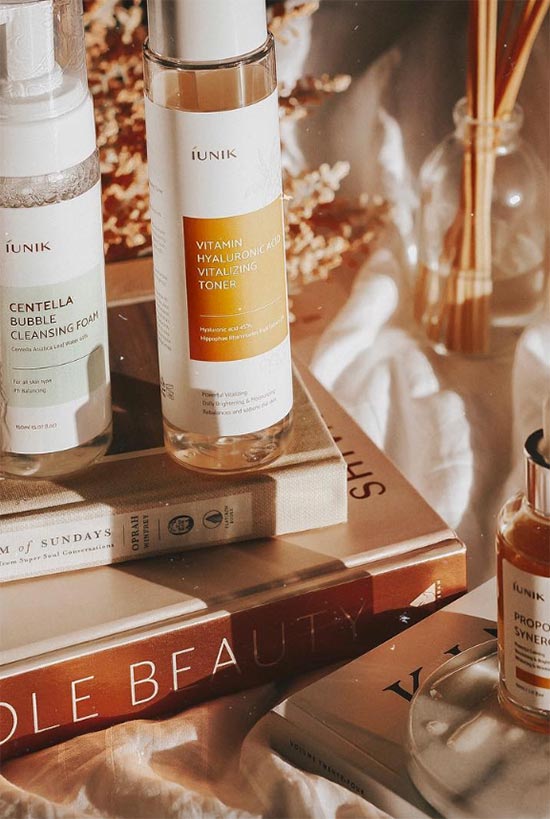
- Location is a common difference between acne and rosacea. Acne bumps tend to show up in areas where the skin tends to be a little oilier – especially on the forehead, jawline, and chin. Bumps from rosacea are usually concentrated on the apples of the cheek although they may also show up on the center of the chin. There are exceptions with both conditions, of course.
- With acne, the blemishes themselves can be skin-colored or a little red, but the area around them will usually remain a normal skin tone. With more severe cases of cystic acne there will be more redness, but it will be patch and surrounding the bumps. With rosacea all of the bumps will be red and surrounded by either wide patches of red skin or with large swaths of the skin looking uniformly red, often with visible veins.
How to Get Rid of Rosacea?
Rosacea is a chronic skin disease that tends to come and go. There are a lot of treatments for rosacea, but they won’t necessarily totally get rid of it. They’ll alleviate the symptoms and help prevent flare-ups from recurring.
However, without treatment, the regular trauma that rosacea flare-ups cause to the skin can lead to permanent skin redness and inflammation as well as worsening of other rosacea symptoms.
Dermatological Treatment
The treatments that doctors often prescribe for rosacea can work in a few ways. They might focus on countering the inflammation that is the main symptom of rosacea, they might focus on dealing with the microbes and mites that may trigger rosacea flare-ups, or they might focus on countering more specific symptoms, depending on the subtype of rosacea that a patient has.
They will often recommend a combination of medications, with some meant to be applied topically and others taken orally.
- Azelaic acid, usually at 15% or 20%, which is now also available over the counter at 10%.
- Tretinoin, a powerful retinoid, is often recommended for subtype 2 rosacea, although many rosacea sufferers on Reddit note that they have to be careful with how often they apply it, as following traditional guidelines can be irritating.
- Topical sodium sulfacetamide, a sulfur ointment, has been proven useful in clinical trials.
- Topical antibiotics like metronidazole, usually to treat subtype 2, which is the kind that looks like acne.
- Ivermectin, a medication that seems to have an anti-parasitic and anti-inflammatory effect that is recommended for rosacea subtype 2. Its mechanism of action isn’t clear, although the target might be the demodex mites.
- Oral medication, including antibiotics like doxycycline, especially for subtype 2.
- IPL and laser treatments are often recommended, especially when it comes to treating visible red veins, which may be part of subtype 1.
- There are other medications that dermatologists occasionally prescribe off-label to help with rosacea causes or symptoms. This is definitely not a comprehensive list!
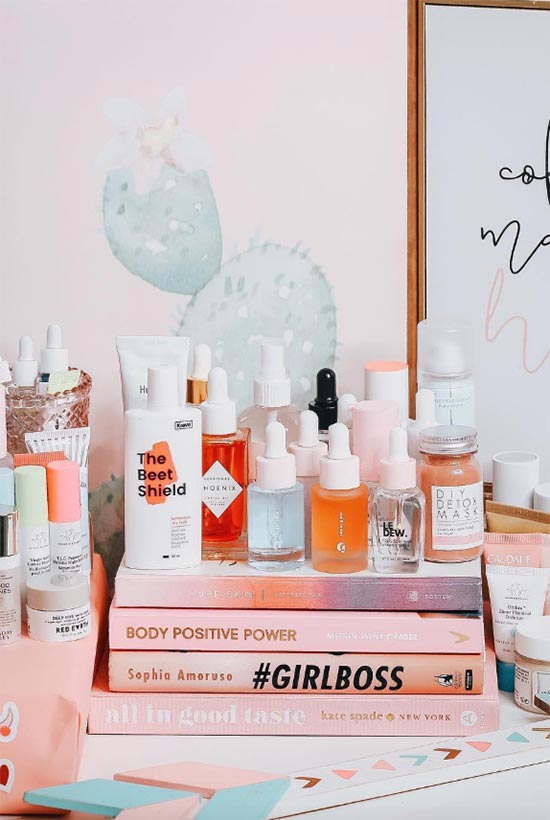
Avoiding Irritants
Finding out what your rosacea triggers are is very useful. By avoiding your triggers you can prevent flare-ups and keep your skin feeling smooth and healthy. Different people with rosacea can have different triggers, but these are some common ones.
- Alcohol (drinking as well as in skin care)
- Direct sun exposure
- Excessive fragrances
- Harsh skincare products
- Spicy food
- Too much skin manipulation
- Exposure to extreme temperatures, including hot showers, extreme weather (both hot and cold) and even hot beverages
- Stress, lack of sleep, and other lifestyle factors

Safe Rosacea Skincare Routine
In conjunction with dermatological treatment, it can also be great to adopt a gentle and soothing skincare routine that includes a lot of ingredients that have shown promise in alleviating the symptoms of rosacea.
While a rosacea skincare routine is not a replacement for medical care, many rosacea sufferers find that by taking care of their skin with a soothing, protective routine they can alleviate their symptoms and even prevent flare-ups.
This routine is put together in a way that takes into account potential topical prescriptions, but you should always talk to your physician or pharmacist about how you plan to incorporate topical rosacea treatments into your routine.
Patch Testing and Slow Introduction
When you build your routine it’s important to remember that what might work beautifully for some people may not work for you. Rosacea is very individualized, kind of like acne.
I looked through many threads about rosacea for this article in order to learn about people’s experiences first-hand. I noticed that for every 5 people raving about a popular skincare ingredient or product, at least one person would chime in with a horrible experience.
This is a great reminder of why you should never just slap something all over your face. Before totally introducing a new skincare product, apply it to just a small patch of skin for a few days in a row.
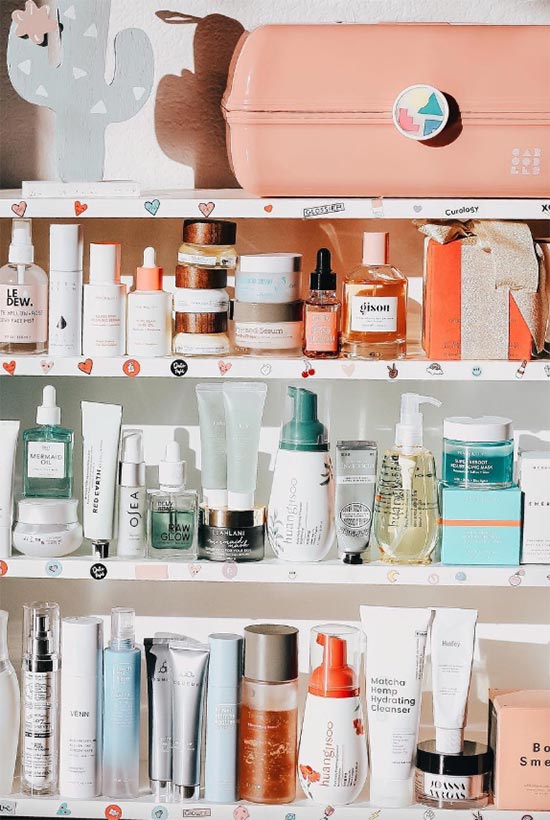
Choose a patch of skin where a flare-up is possible for you but won’t be totally destructive it if happens, like on a small part of the cheek on the chin. If you don’t experience any irritation then you can start applying it all over your face.
Make sure to only do this with one product at a time. What often happens is that people start a new skincare routine that consists of 3 or 4 products, and then end up with some sort of negative reaction. It might only be one product that caused it, but they have no way of knowing which product it was.
This is why you want to introduce one product, use it normally for two weeks, and only then introduce another new product. This way, if you have some sort of negative reaction you’ll easily identify the culprit.
PM Routine
Step 1: Cleanser
Cleansing is an important part of every skincare routine, but for those with rosacea, it can be hard to find a cleanser that doesn’t irritate. It’s best to choose an oil or lotion cleanser.
However, I don’t recommend double cleansing in this instance because that can mean too many products and too much contact with the skin, which increases the chances of irritation. A single cleanser that is non-stripping and that you can rinse off is the best choice, though if you have oily skin on top of your rosacea you can use a gentle, low-pH gel cleanser.
Use the cleanser according to the directions, taking into account that most oil and lotion cleansers are best applied to the skin when it is dried and then emulsified with water. Make sure you use plenty of product so that your hands don’t tug on your skin and instead glide over it as you gently massage it in.
Rinse your cleanser off with lots of water, and if truly necessary use a microfiber cloth to remove the remnant. Avoid potentially harsh removal aids like towels, sponges, or cotton pads.
Step 2: Special Rosacea Treatment
Before putting on rosacea treatments, it is important to totally dry your face by pressing a microfiber towel or tissue against it. Water is a penetration enhancer, which is great when we talk about typical serums and moisturizers, but it will increase the chance that topical medication will irritate your skin.
Once your skin is dry, apply your prescribed treatment to the affected area gently, with tapping motions. Some treatments should be applied all over the face.
Step 3: (Optional) Essences or Serums with Anti-Inflammatories
Some people with rosacea choose to avoid multi-step routines, and instead jump straight over to moisturizer. It is up to you to figure out if additional steps help your skin or if they bring more irritation.
The best essences and serums for those with rosacea will contain anti-inflammatory ingredients like green tea extract, centella asiatica extract, white willow bark extract, hydrolyzed oatmeal, allantoin and more.
I normally recommend applying serums and essences with a massage, but that method is often too irritating for those with rosacea. Therefore, I actually recommend dispensing the products in the palm of your hands and then gently pressing it into the skin.
Step 4: Buffered Treatment
While some rosacea treatments should be applied directly to cleansed skin, others can be buffered. This includes azelaic acid and tretinoin, in particular, as they can irritate the skin for some people when applied directly, and they seem to still be effective when applied after a serum or moisturizer. That being said, it’s important to first consult your physician about your action plan.

Step 5: Gentle Moisturizer
When it doubt, a simple moisturizer is the best direction to go in. Your moisturizer shouldn’t have a long list of ingredients.
Depending on your skin type and location, you might prefer a more lightweight, non-greasy moisturizer or you might prefer something a little heavier and more occlusive. If there are any additives in your moisturizer they should be soothing and anti-inflammatory ones that will help calm down the skin when it’s inflamed.
To apply your moisturizer, rub a generous amount of it between both hands, and then apply it to your skin by pressing your palms against your face. You can use your ring finger to apply it to harder-to-reach areas like below the eyes or around the nose.
AM Routine
Step 1: Splash of Water
You don’t need to cleanse your skin in the morning – it’s just another chance to irritate the skin. Instead, wake yourself up with a splash of water or with a misting of a gentle essence. If you’re going to apply a prescribed treatment next, then make sure to thoroughly dry your skin by dabbing it with a soft microfiber cloth.
Step 2: Rosacea Treatment
Some rosacea creams and treatments are best applied both morning and night. If so, apply the treatment as directed either all over the face or just to the affected area. You may also buffer the treatment by applying it after serum or moisturizer if that’s necessary for your skin and okayed by your doctor.
Step 3: Serum or Moisturizer without SPF
It’s usually a good idea to apply a hydrating and soothing serum or lotion before putting on sunscreen, especially if your sunscreen is not moisturizing enough on its own. Like in the evening, it is better to choose a very gentle product that is free of potential irritants.
It can even be the same serum or moisturizer that you use at night! Apply it by pressing it into your skin gently. Wait a few minutes so it can sink in completely before applying your sunscreen.
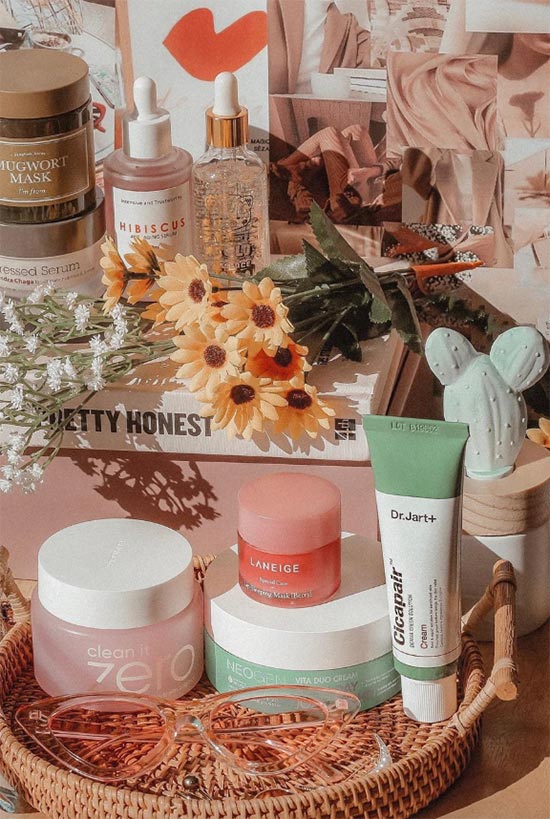
Step 4: Sunscreen
Sun exposure is a great way of making almost all skin issues just that much worse. Regular sunscreen use is a very important part of preventing a rosacea flare-up, although the hardest part of those with rosacea is finding a non-irritating sunscreen. Some people do better with chemical sunscreens, while others prefer mineral sunscreens, so experiment with both.
To ensure that you achieve maximum protection you must apply an adequate amount of sunscreen. A ¼ teaspoon is the amount normally recommended, although if your face is larger than average you’ll need more, and if it’s small than average then a little less might be okay.
It might not absorb well if you press it into the skin, so go slowly and massage it in very gently. If it seems like a lot of sunscreen then you can also turn it into a two-part application. First apply the first half of sunscreen, wait a few minutes for it absorb, and then apply the other half in a second layer.
Weekly Masking
When you have rosacea, a cold mask can be the best thing for soothing the inflammation and reducing the facial redness. Look for masks that, like your serums and moisturizers, are rich in anti-inflammatory ingredients.
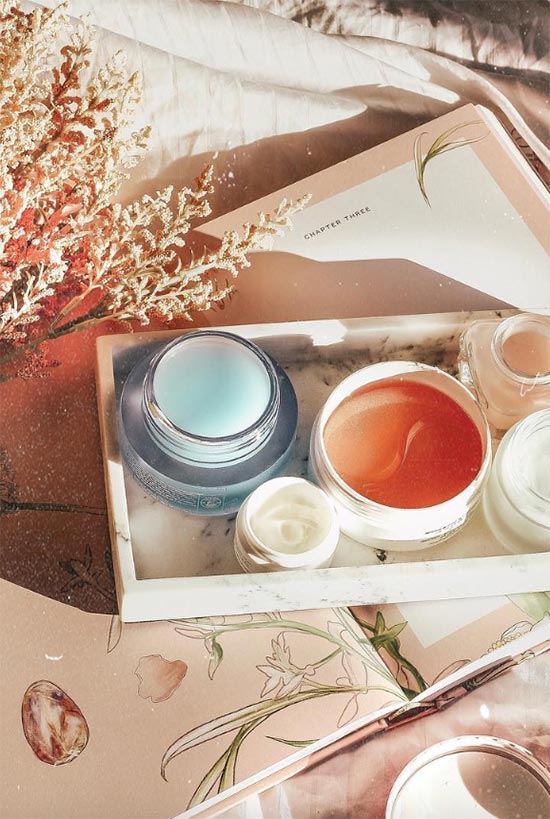
If your skin tends to get oily, which is not unheard of for those with rosacea, you can choose a mask that combines gentler clays like kaolin with a lot of hydrating and soothing ingredients. The kaolin will absorb the excess oil without drying out or irritating the skin, especially when there are other ingredients in the blend that help tamper its drying effects.
It is more common for those with rosacea to have dry skin, however, in which case a strictly hydrating, soothing, and nourishing mask is the way to go. Cold sheet masks are especially excellent for bringing down inflammation.
Work your mask into your skincare routine without making any other changes or using any other new products, as that can irritate the skin. Rinse-off masks should be applied after cleansing, while sheet masks should go on after essences or serums but before moisturizers.
When it comes to rinse-off masks, you might want to play around with how long you leave them on, and err on the side of leaving them on for less time than recommended. Leaving a mask on for too long can end up hurting the skin more than it helps it.
Rosacea Skincare Tips
- Cool (but not freezing) temperatures can definitely help soothe the skin and bring down some of the irritation of rosacea flare-ups. One way to do that is by keeping some or all of your skin care in the fridge, so once it’s time to apply it, it will be cool and calming.
- For many people, too much touch and skin manipulation can irritate the skin and lead to facial flushing. Avoid touching your face too much, and don’t massage aggressively when you apply your skin care.
- Certain people on Reddit’s Rosacea subreddit mention certain supplements and diets have proven effective, including taking probiotics or MSM and eating low-inflammatory diets or diets that focus on gut health. I’ll stay away from giving dietary advice here since these are strictly anecdotal experiences, but if you do choose to go this route make sure to speak to your doctor first. As always, a healthy diet filled with fresh products rich in vitamins and fibers will surely have a positive overall effect.
- If you have yet to find a sunscreen that doesn’t irritate your skin, then invest in a great hat with SPF. You will have to make sure to plop it on before outdoor excursions, so choose a hat with a high UPF (the fabric equivalent of SPF) that you will also absolutely love. Nordstrom has a great selection, but this one is our favorite.

Photos via @sellyttn, Instagram

